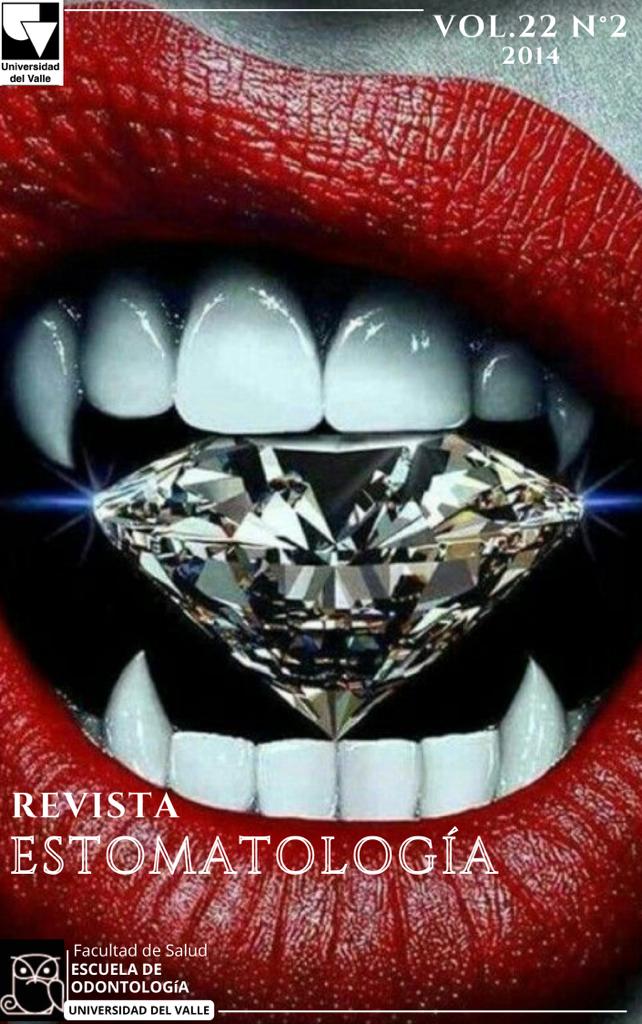Association between hormonal therapy and craniofacial development in subjects between 10 and 18 years of age. Systematic review
Keywords:
Hormones, growth and development, craniofacial disorders, cephalometry, mandible, deficiencyMain Article Content
Background: Hormone deficiency could affect craniofacial complex during esqueletal growth and development.
Objective: Determine whether there is scientific evidence of the association between hormonal treatment and craniofacial growth measured by cephalometry films, in subjects of 10 to 18 years with hormonal
treatment.
Materials and Methods: A systematic review. For the articles published in PubMed, Google Scholar, Lilacs, Embase and Science Direct databases, without restriction of publication year was performed. Clinical
trials, case control studies, cohort, systematic reviews and meta analysis studies were included. Reading f the abstracts and the complete articles were made by two researchers.
Results: Among 1085 articles found, 1074 were excluded because did not meet the inclusion criteria. After complete reading of the articles, five were excluded because they were cross-sectional studies and one was not recovered in the full text. In total, 6 articles were included. These studies report that patients who were treated with hormone substitution therapy showed favorable changes in their craniofacial structures, especially in mandibular total length, ramus length and mandibular body length. These positive changes led to an improvement in profile, inter-maxillary relations, and other osseous body structures.
Conclusions: Despite the heterogeneity of the studies it was found that early replacement with hormone treatment, regardless of the dose and long-term treatment, accelerates the development of craniofacial structures, mainly the mandible, to reach the skeletal patterns genetically established. Studies are required to evaluate replacehormone treatment in patients without additional systemic compromises.
2. Hall JE. Guyton y Hall. Tratado de fisiología médica. Elsevier Health Sciences; 2011.
3. Cantu G, Buschang PH, Gonzalez JL. Differential growth and maturation in idiopathic growth-hormone-deficient children. Eur J Orthod 1997; 19(2):131-9.
4. The Cochrane Collaboration. Revisores Cochrane Manual 4.1.6 [Internet]. 2003. Available from: www.cochrane.es/files/ handbook.doc
5. Primo J. Niveles de evidencia y grados de recomendación (I/II). Enfermedad Inflamatoria Intestinal al día. 2003; 2(2):39-42.
6. Kjellberg H, Wikland KA. A longitudinal study of craniofacial growth in idiopathic short stature and growth hormone-deficient boys treated with growth hormone. Eur J Orthod 2007; 29(3):243-50.
7. Verdonck A, Gaethofs M, Carels C, de Zegher F. Effect of low-dose testosterone treatment on craniofacial growth in boys with delayed puberty. Eur J Orthod 1999; 21(2):137-43.
8. Prader A. Testicular size: assessment and clinical importance. Triangle 1966; 7(6):240-3.
9. Hass AD, Simmons KE, Davenport ML, Proffit WR. The effect of growth hormone on craniofacial growth and dental maturation in Turner syndrome. Angle Orthod 2001; 71(1):50-9.
10. Demirjian A, Goldstein H, Tanner JM. A new system of dental age assessment. Hum Biol 1973; 45(2):211-27.
11. Greulich W, Pyle S. Radiographic Atlas of Skeletal Development of the Hand and Wrist. 2nd ed. Stanford University Press; 1999.
12. De Faria MEJ, Carvalho LR, Rossetto SM, Amaral TS, Berger K, Arnhold IJP, et al. Analysis of craniofacial and
extremity growth in patients with growth hormone deficiency during growth hormone therapy.c Horm Res
2009; 71(3):173-7.
13. Feingold D. The Tanner stages. Atlas of Pediatric Physical Diagnosis. 2nd ed. Philadelphia, United States: W.B. Saunders; 1992. p. 16-9.
14. Dahllöf G, Forsberg CM, Näsman M, Mattsson T, Modéer T, Borgström B, et al. Craniofacial growth in bone marrow transplant recipients treated with growth hormone after total body irradiation. Scand J Dent Res 1991; 99(1):44-7.
15. Dahllöf G, Forsberg CM, Borgström B. Changes in craniofacial development induced by growth hormone therapy in children treated with bone marrow transplantation. Acta Paediatr 1994; 83(11):1165-9.16. Oliveira-Neto LA, Melo M de FB, Franco AA, Oliveira AHA, Souza AHO, Valença EHO, et al. Cephalometric features in isolated growth hormone deficiency. Angle Orthod 2011; 81(4):578-83.
17. Konfino R, Pertzelan A, Laron Z. Cephalometric measurements of familial dwarfism and high plasma immunoreactive growth hormone. Am J Orthod. 1975; 68(2):196-201.
18. Loche S, Bizzarri C, Maghnie M, Faedda A, Tzialla C, Autelli M, et al. Results of early reevaluation of growth hormone secretion in short children with apparent growth hormone deficiency. J Pediatr 2002; 140(4):445-9.
Downloads
Los autores/as conservan los derechos de autor y ceden a la revista el derecho de la primera publicación, con el trabajo registrado con la licencia de atribución de Creative Commons, que permite a terceros utilizar lo publicado siempre que mencionen la autoría del trabajo y a la primera publicación en esta revista.

